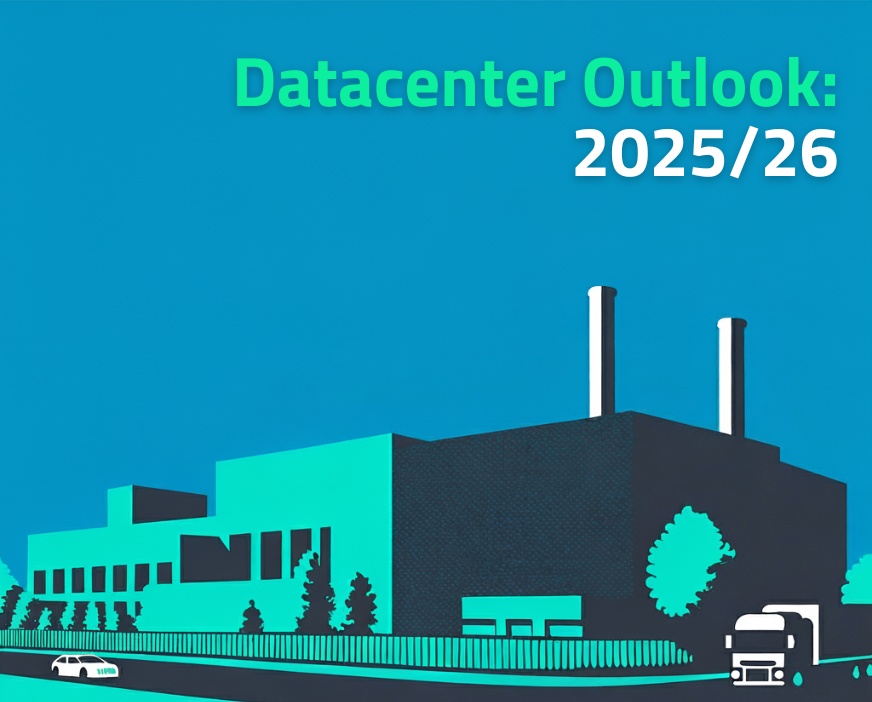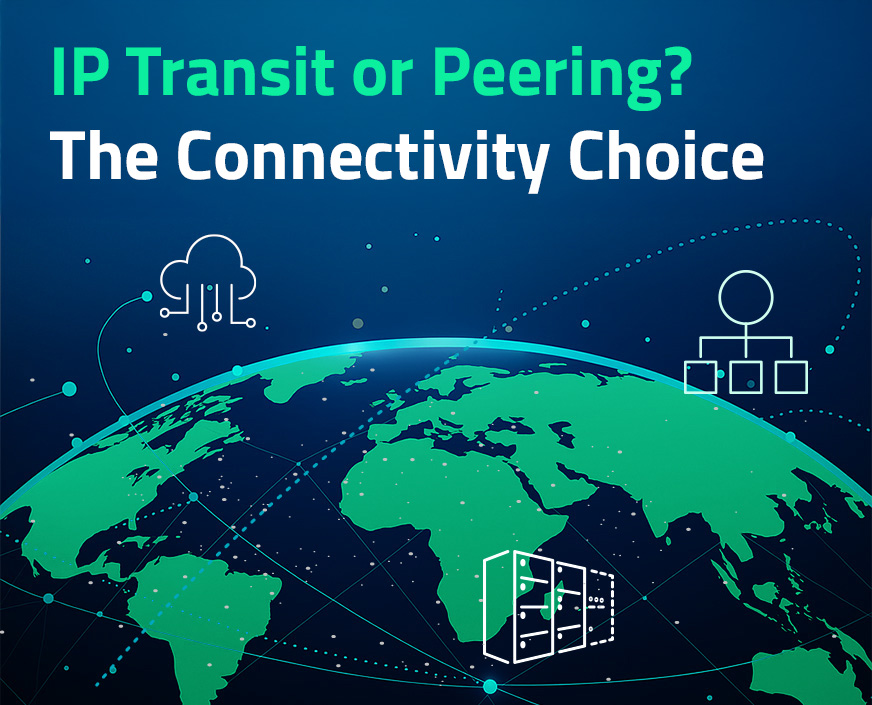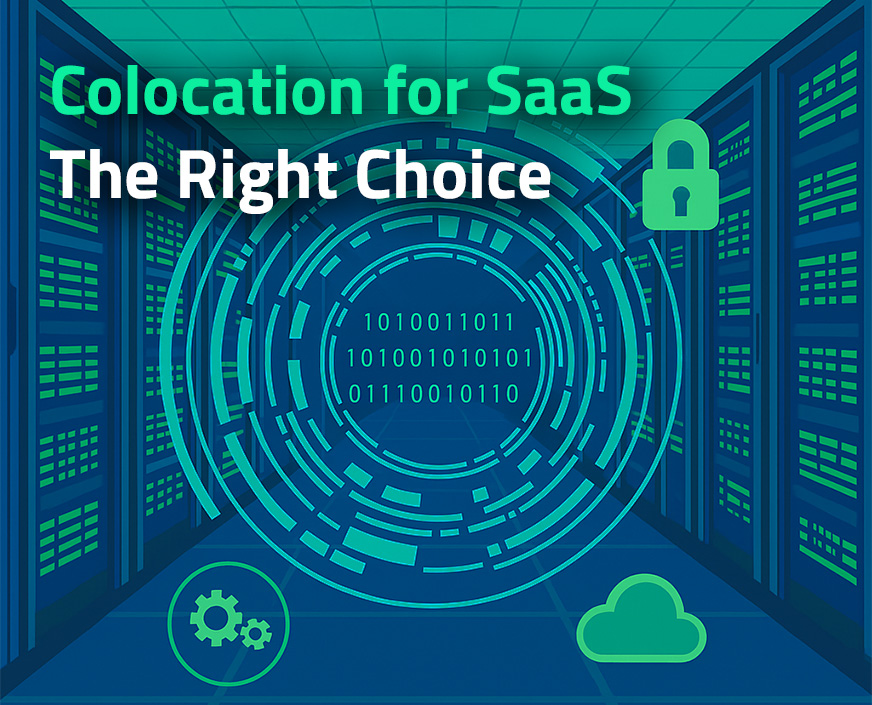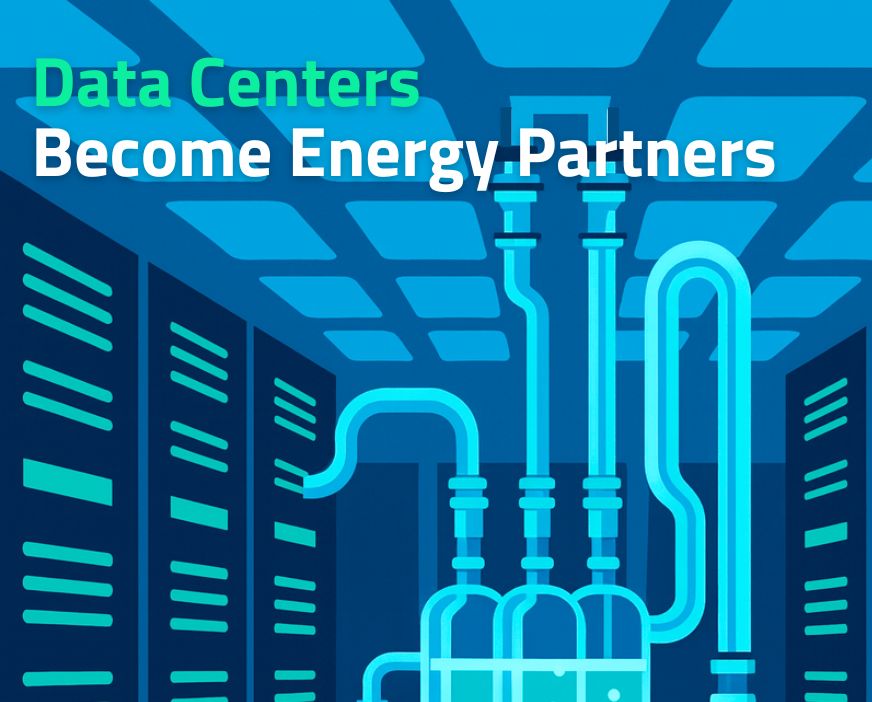Introduction: Data Centers as the Engine of Digital Transformation
The digitalization of business and society is progressing at a rapid pace – and with it, the importance of data centers is growing. The current GDC-Outlook 2025/26 from the German Datacenter Association (GDA) clearly illustrates how the market is developing in Germany and Europe, what challenges operators must face, and what political and technological adjustments are necessary to ensure a future-proof, resilient, and sustainable digital infrastructure.
Germany as a Leading Data Center Location in Europe
With over 1.3 GW of installed IT capacity, Germany is currently Europe’s largest data center market. The Rhine-Main region, with Frankfurt as its core location, is particularly among the most dynamic markets –
These figures underscore: The demand for powerful and scalable data center capacities remains consistently high. Growth drivers are particularly wholesale colocation offerings and customized hyperscale solutions. While retail colocation continues to show stable baseline demand, large-scale projects are increasingly dominating the market.
Grid Expansion as a Critical Bottleneck
Despite all the dynamism, the industry faces a central infrastructural problem: access to power grids. The study clearly states: “Grid capacity remains the central bottleneck.”
Especially in core markets like Frankfurt or Berlin, the situation is tense. Example Berlin: There,
Another problem: Oversized connection requests lead to so-called “ghost capacity.” In the study, CBRE identifies a realistic upper limit for power/space allocation at
AI Changes the Rules of the Game – Also for Infrastructure and Design
The report makes it clear: Artificial intelligence acts as a massive accelerator for the demand for computing power. At the same time, it fundamentally changes the requirements for infrastructure.
Exemplary statements from the report:
- By 2030, data centers worldwide could account for up to 9% of electricity consumption, two-thirds of which by AI.
- AI workloads are volatile, high-performance-intensive, and demand low latency – classic infrastructures are often not up to these demands.
The answer: Modular data centers with local power generation, as demonstrated by the collaboration between CyrusOne and E.ON. A system is being built there that, in addition to 61 MW of additional power, also integrates waste heat utilization for cooling via absorption chillers – a novelty with a signaling effect for the industry.
Secondary Markets and New Locations Gaining Importance
While FLAPD markets (Frankfurt, London, Amsterdam, Paris and Dublin) continue to grow strongly, attention is increasingly turning to secondary markets. Between 2022 and Q2/2025, their cumulative capacity has grown from 563 MW to over 1 GW. Reasons for this are:
- Local Latency Requirements
- Data sovereignty
- Bottlenecks in Established Markets
In addition, new regions, for example in Scandinavia or Southern Europe, are becoming interesting as future AI training clusters due to favorable energy prices and abundant land availability – even without high population density or GDP correlation.
Sustainability and Energy Efficiency as Guiding Principles
A central theme of the study is the contribution of data centers to the energy transition. Here, the GDA focuses on:
- Waste heat utilization: e.g., at NTT in Frankfurt and Berlin, where more than 10,000 people are to be supplied with heat.
- Direct liquid cooling: As with Rittal and the GSI Helmholtz Centre, where a new high-performance water cooling system is being tested and a PUE value below 1.07 is achieved.
- Battery storage, UPS, and emergency power systems as keys to grid resilience and operational flexibility during island-mode operation, as demonstrated in the case of Notstromtechnik-Clasen.
From 2027, data centers in Germany must fully cover their electricity consumption from renewable energies – a requirement that, according to the study, currently applies exclusively to this industry.
Political Advocacy and Strategic Alignment of the GDA
The GDA is increasingly positioning itself as a political actor at federal, state, and EU levels. The inclusion of data centers in the coalition agreement and the planned exchange with the EU Commission show: The industry is recognized as systemically relevant.
The central message of the report: Data centers are not side issues, but the backbone of Europe’s digital sovereignty – technically, economically, and geopolitically.
Conclusion: Growth, Change, and Responsibility
The GDC-Outlook 2025/26 provides a clear picture:
- The demand for computing power is increasing exponentially – driven by digitalization, cloud, and AI.
- Grid expansion is the bottleneck that urgently needs to be alleviated.
- Modularity, energy efficiency, and synergies with the energy system are central solution approaches.
- Politics, business, and operators must work more closely together to secure Germany’s role as a leading data center location.
The GDA and its members are doing pioneering work in this regard – technically, regulatorily, and strategically. But as the foreword aptly states: “Only together can we shape a strong, sustainable digital infrastructure – and thus secure Europe’s sovereignty.”
Download the GDA Datacenter Outlook Germany 2025/26 Report
Reserve Capacities
Ready for the digital future? Secure your capacities now in the AI-ready data center in Rosbach near FFM.








